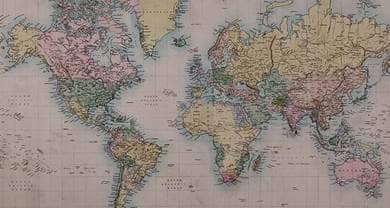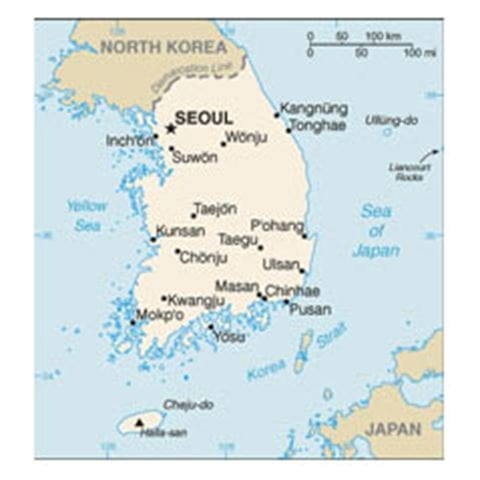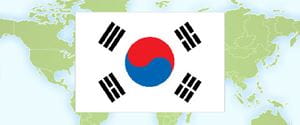- Trending:
- Forgiveness
- |
- Resurrection
- |
- Joy
- |
- Feminism
- |
- Afterlife

RELIGION LIBRARY
Korea, South

The country has an area of 46,500 square miles and a population estimated at 22.7 million. The number of religious believers was unknown but was estimated by the Government in 2001 to be 12,000 Protestants, 10,000 Buddhists, and 800 Catholics. Estimates by South Korean and international church-related groups were considerably higher. In addition, the Chondogyo Young Friends Party, a government-approved group based on a traditional religious movement, had approximately 15,000 practitioners, according to the Korean Institute for National Unification (KINU) 2008 White Paper. According to a South Korean press report, in 2002 the chairman of the Association of North Korean Catholics stated that the Catholic community in the country had no priests but held weekly prayer services at the Changchung Catholic Church in Pyongyang. However, some doubted that all of those attending services were Catholic.
In Pyongyang there are four state-controlled Christian churches: two Protestant churches (Bongsu and Chilgol Churches), the Changchung Roman Catholic Church, and the Holy Trinity Russian Orthodox Church. The Chilgol Church is dedicated to the memory of former leader Kim Il-sung's mother, Kang Pan-sok, who was a Presbyterian deaconess. The number of congregants regularly worshiping at these churches is unknown.
The Presbyterian Church of Korea in the Republic of Korea (ROK) has been partnering with the Christian Association in North Korea to rebuild Bongsu Church since 2005. In the fall of 2006, according to press reports, a delegation of 90 Christians from South Korea visited the Bongsu church to celebrate completion of its first phase of renovation. According to religious leaders who traveled to the country, there were Protestant pastors at these churches, although it was not known if they were resident or visiting. In July 2008 South Korea's Dong-A Ilbo newspaper reported that 157 members of the Presbyterian Church of Korea visited Pyongyang for another dedication ceremony. The Presbyterian Church in the USA (PCUSA) has reportedly contributed to humanitarian projects administered by Bongsu Church.
In its July 2002 report to the U.N. Human Rights Committee, the country reported the existence of 500 "family worship centers." However, according to the 2008 KINU White Paper, defectors interviewed were unaware of any such centers. Observers stated that "family worship centers" may be part of the state-controlled Korean Christian Federation, while an unknown number of "underground churches" operate apart from the Federation and are not recognized by the Government. The 2008 KINU White Paper included defector testimonies referencing the existence of underground churches but concluded that their existence is hard to verify. In July 2009 the Dong-A Ilbo newspaper reported an estimated 30,000 Christians, while some NGOs and academics estimate there may be up to several hundred thousand underground Christians in the country. Others question the existence of a large-scale underground church or conclude that it is impossible to estimate accurately the number of underground religious believers. Individual underground congregations are reportedly very small and typically confined to private homes. At the same time, some NGOs reported that the individual churches are connected to each other through well-established networks. The regime has not allowed outsiders the access necessary to confirm such claims.
According to the 2008 KINU White Paper, there were an estimated 60 Buddhist temples. Most were regarded as cultural relics, but religious activity was permitted in some. A few Buddhist temples and relics have been renovated or restored in recent years under a broad effort aimed at "preserving the Korean nation's cultural heritage." In 2007 reconstruction was completed on the Shingye or Singyesa (Holy Valley) Temple, which was destroyed during the Korean War. The ROK Government and foreign tourists funded the reconstruction. A South Korean monk, the first to permanently reside in North Korea, has lived at the temple since 2004 but serves primarily as a guide for visiting tourists rather than as a pastor ministering to Buddhists living in the area.
The Government announced in June 2007 that 500 monks and Buddhist followers from South Korea were making day-long pilgrimages to the recently renovated Ryongthong Temple in Kaesong strictly for religious purposes. These visits were discontinued in November 2007, however. Foreign diplomats in Pyongyang who visited the temple were told that the two monks living there may be joined by more. State-controlled press reported on several occasions that Buddhist ceremonies had been carried out in various locations. Official reporting also linked descriptions of such ceremonies with the broader theme of Korean unification.
The Holy Trinity Russian Orthodox Church opened in Pyongyang in 2006. Kim Jong-il reportedly commissioned the church after he visited an Orthodox cathedral in Russia in 2002. Two North Koreans who studied at the Russian Orthodox Seminary in Moscow were ordained as priests and are serving at the church. The purported aim of the church was primarily to provide pastoral care of Russians in the country, but one religious leader with access to the country speculated that the church likely extended pastoral care to all Orthodox Koreans as well. As with other religious groups, no reliable data exists on the number of Orthodox believers.
Several foreigners residing in Pyongyang attended Korean-language services at the Christian churches on a regular basis. Some foreigners who visited the country stated that church services appeared staged and contained political content supportive of the regime, in addition to religious themes. Foreign legislators attending services in Pyongyang in previous years noted that congregations arrived at and departed services as groups on tour buses, and some observed that they did not include any children. Other foreigners noted that they were not permitted to have contact with congregants. Foreign observers had limited ability to ascertain the level of government control over these groups, but it was generally assumed they were monitored closely. According to the 2008 KINU White Paper, defectors reported being unaware of any recognized religious organizations that maintained branches outside of Pyongyang.
Several schools for religious education exist in the country. There are three-year colleges for training Protestant and Buddhist clergy. A religious studies program also was established at Kim Il-sung University in 1989; its graduates usually worked in the foreign trade sector. In 2000 a Protestant seminary was reopened with assistance from foreign missionary groups. Critics, including at least one foreign sponsor, charged that the Government opened the seminary only to facilitate reception of assistance funds from foreign faith-based NGOs. The Chosun Christian Federation, a religious group believed to be controlled by the Government, contributed to the curriculum used by the seminary. The Chosun Christian League operates the Pyongyang Theological Academy, a graduate institution that trains pastors affiliated with the Korean Christian Federation.
| Population | Population (2009 est.) 48,508,972 |
| Religious Demographics | Christian 26.3% (Protestant 19.7%, Roman Catholic 6.6%), Buddhist 23.2%, other or unknown 1.3%, none 49.3% (1995 census) |
| Ethnic Groups | Ethnic Groups homogeneous (except for about 20,000 Chinese) |
| Languages | Languages Korean, English widely taught in junior high and high school |
| Country Flag |  |










